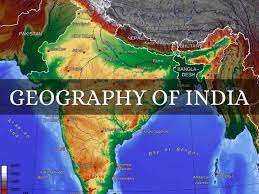
The article gives a brief understanding of Different Environment and Wildlife Acts in India Tourism Sector
- Environment Protection Act, 1986: The act in wake of Bhopal Gas Tragedy is made under umbrella legislation designed to provide a framework from central government to provide protection and improvement of environment. The areas restricted are Dun valley in Uttarakhand, Aravalli
regions, Alwar, Coastal regions and Ecological sensitive zones.
The following is a summary of the main goals and purposes of the Environment Protection Act of 1986. - Putting into practice the resolutions reached at the Stockholm United Nations Conference on the Human Environment.
- Establishing a regulatory body inside the government with the power to impose closure orders and other direct directives on business.
- Organizing the various agencies’ operations in accordance with the legislation currently in place.
- Regularly passing legislation to save the environment.
- Enforcing sanctions against individuals who pose a risk to public health, safety, or the environment. The punishment for each infraction or failure is one of up to five years in jail, a fine of up to one lakh rupees, or both. There is also a possibility of a seven-year extension.
- Wildlife Protection Act, 1972: The wildlife protection act shifted from state list to concurrent list which took up the task of setting up Wildlife National Parks and Sanctuaries.
A legislative framework for the preservation of different wild animal and plant species, the management of their habitats, and the regulation and control of commerce in wild animals, plants, and goods derived from them is provided by the Wild Life (Protection) Act, 1972.
The legislation also includes schedules of the plants and animals that are subject to different levels of government protection and oversight.
The Wildlife Act facilitated India’s admission to the Convention on International Trade in Endangered Species of Wild Fauna and Flora (CITES).
Formerly, Jammu & Kashmir was exempt from the 1972 Wildlife Protection Act. Because of the reorganization act, J&K is now covered under the Indian Wildlife Protection Act. Forests and the Protection of Wild Animals and Birds, 42nd Amendment Act, 1976, was moved from the State to the Concurrent List.
According to Article 51 A (g) of the Constitution, it is every citizen’s basic responsibility to preserve and enhance the natural environment, which includes forests and wildlife. The Directive Principles of State policy, Article 48 A, requires the State to work toward preserving and enhancing the environment as well as the nation’s forests and animals.
Need for Wildlife Protection Act
- Before the Parliament established this law in 1972, wildlife was a state topic since it is a part of “forests.” It is currently listed as concurrent. India is home to a vast array of different plants and animals. The population of several animals was rapidly declining.
- An abrupt decline in the flora and fauna can result in an ecological imbalance, which has an impact on the ecosystem and the climate in many ways.
- In this context, the Wild Birds and Animals Protection Act of 1935 was the most recent Act enacted during the British era. This required an upgrading since the penalties meted out to poachers and merchants in wildlife goods were out of proportion to the enormous financial gains they made.
- Prior to the implementation of this Act, India had just five national parks.
- Forest Act, 1980: The act supports all types of forests, check deforestation and encourage afforestation in non-forest areas. It prohibits state government for declaring any portion of forest as non-reserved then amended act in 1988 which prohibits lease of forest land. The act is again got amended in 1992.
- Environment Impact Assessment: It is the assessment of environmental consequences of a plan, policy, program or actual project to ensure decision makers to consider the environment impacts whether to proceed or not. They are unique and do not require predetermined outcome. The methods used are Industrial methods and Fuzzy logic to measure date to estimate value of impact indicators.
-The Ministry of Environment, Forests and Climate change (MOEFCC) of EIA inspect the impact.
-The hydropower Sustainability Assessment Protocol is a sector for checking the quality.
- Environment Information System: The EIS is implemented by Ministry by end of 6th
Five Year Plan scheme for environmental information collection, storage,
retrieval and many thinkers.
-76 ENVIS network centers apart from the focal point are made in which 29 ENVIS centers are on state government.
-Its objective is to build up a repository and dissemination center in environment science and to gear up the modern technologies of acquisition, processing, support and promote
research.
- Environment Management System: It refers management of an organizational environmental program in a comprehensive, systematic, planned and documented manner. It includes organization structure, planning and resources for developing, implementing, maintaining policy for environment protection. EDIS and EDMS are IT solution for tracking environmental data.
Also Read:
- 15 Different Types of Budgeting in Tourism Accounting
- Basic Accounting Books and Records
- Centralization & Decentralization, Span of Control, Formalization in Management
- 10 Different Management Motivation Theories in detail with examples
- Carrying Capacity: The number of people, animals or corporations which a region can support without environment degradation is known as Carrying capacity.
Examples of accidents happens due to carrying capacity and can be prevented through.
–Ecological footprint: It measures human demand on nature, the quantity of nature it takes to support people of an economy. It tracks this demand through an ecological accounting system.
–Overshoot occurs when a population temporarily exceeds the long-term carrying capacity of its environment.


